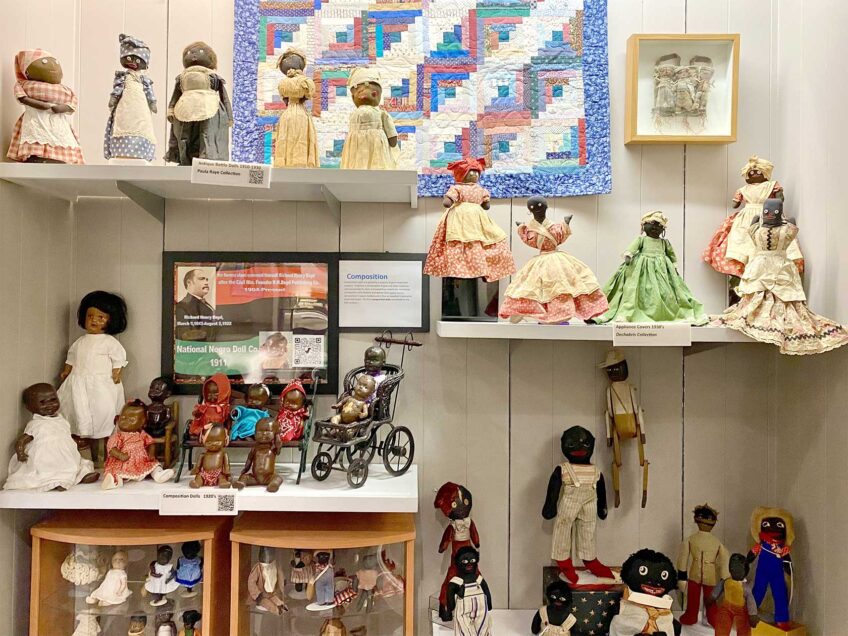

Author: Photo: Courtesy Berta Walker GalleryAgnes Weinrich (1873-1947): “Untitled, n.d.,” oil on board.
Provincetown, Massachusetts, sits on the edge of Cape Cod’s spire, teetering delicately over the crashing ocean. For over a century, artists have taken refuge in this beachside town. Nestled among trees on Bradford Street, Berta Walker Gallery gives these artists a place to show their work and connect with their passion. The current exhibit, “Women Choose Women,” highlights the female artists who have found sanctuary on the Cape from constricting gender and artistic roles.
Laura Shabott, Provincetown artist and gallery assistant at Berta Walker gallery, explains that during World Wars I and II, when Europe was too hostile an environment for artists to flee to, they began moving to Cape Cod and establishing communities. By 1916, the Provincetown Art Colony was called by The Boston Globe, “the biggest art colony in the world.” Shabott speculates that it’s the raw natural setting and the glorious oceanside light that attracts creators to the peninsula. “A lot of art colonies are at the end of a place, at the end of the world,” she says.
Finding a groove
Blanche Lazzell was one such artist, who traded her studies in Paris with the French cubist Albert Gleizes for the beachy breeze of Massachusetts in 1915. Lazzell is known for her white-line woodcuts featuring bold colors in simple but engaging scenes of flowers, boats, and houses. At this time Provincetown was a blooming mecca for abstract art, and Lazzell’s work quickly found its place in a comfortable groove between cubism and fauvism.
Her piece “Fishing Weirs,” Provincetown, showing at Berta Walker, demonstrates the increased abstraction seen in her work once she settled in Cape Cod. The oil on board piece depicts a boat docked at a multicolored, cubist-constructed pier, but it takes a little putting together with the eyes to get there. In her early works, colors are very distinct and separated by the white lines of the woodcut print. Here, blues, yellows and reds seep over their black outlines to blend into a visual feast, much like the water-bound sunsets Lazzell must have been seeing.

Author: Photo: Courtesy Berta Walker GalleryErna Partoll, “The Green Wave,” 2009, gouache on paper.
Feminine vibe
Also showing in “Women Choose Women” are Erna Partoll, an abstract painter originally from Switzerland, and Tatjana Meyerowitz, a native of Zagreb, Croatia with a reputation for pastel drawing. Shabott says U.S.-based artists often gravitate towards the Cape as well, and many New York transplants have work in the show. “Women Choose Women” is an extensive, heartwarming portrait of a town that fosters the work and the lives of female artists from all over the world.
In addition to the idyllic landscapes and the number of artists already settled in the area, Shabott says that Provincetown is a particularly comfortable place for female artists. “The women’s community here is very supportive of each other in ways you don’t see in many places,” she says. She explains that the Cape provides extremes in nature and social temperament. During the summer influx, the picture-perfect town is flooded with people and life, begging to be put on canvas. During the winter, the area turns more contemplative, given over to the raw winter weather and the isolation of a deserted tourist spot. Either way, inspiration abounds.


![Banner [Virtual] Art Gallery](https://baystatebanner.com/wp-content/uploads/2024/04/Cagen-Luse_Men-at-store-e1713991226112-150x150.jpg)

![Banner [Virtual] Art Gallery](https://baystatebanner.com/wp-content/uploads/2024/04/Cagen-Luse_Men-at-store-e1713991226112-848x569.jpg)

